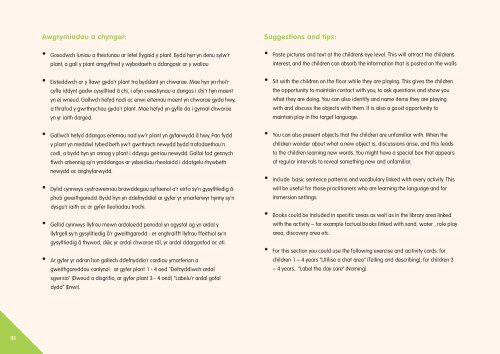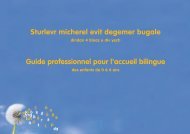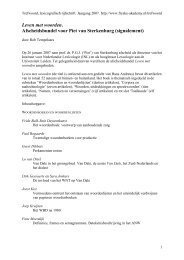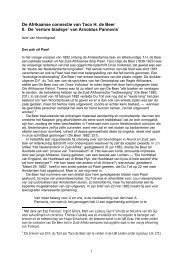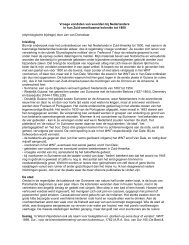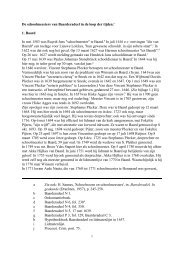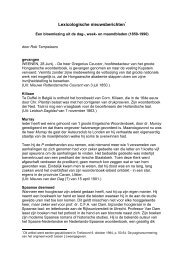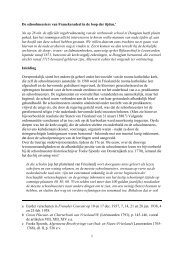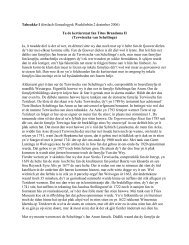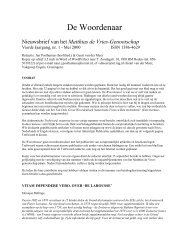language - Fryske Akademy
language - Fryske Akademy
language - Fryske Akademy
Create successful ePaper yourself
Turn your PDF publications into a flip-book with our unique Google optimized e-Paper software.
21<br />
Awgrymiadau a chyngor:<br />
• Gosodwch luniau a thestunau ar lefel llygaid y plant. Bydd hyn yn denu sylw'r<br />
plant, a gall y plant amgyffred y wybodaeth a ddangosir ar y waliau<br />
• Eisteddwch ar y llawr gyda'r plant tra byddant yn chwarae. Mae hyn yn rhoi'r<br />
cyfle iddynt gadw cysylltiad â chi, i ofyn cwestiynau a dangos i chi'r hyn maent<br />
yn ei wneud. Gallwch hefyd nodi ac enwi eitemau maent yn chwarae gyda hwy,<br />
a thrafod y gwrthrychau gyda'r plant. Mae hefyd yn gyfle da i gynnal chwarae<br />
yn yr iaith darged.<br />
• Gallwch hefyd ddangos eitemau nad yw'r plant yn gyfarwydd â hwy. Pan fydd<br />
y plant yn meddwl tybed beth yw'r gwrthrych newydd bydd trafodaethau'n<br />
codi, a bydd hyn yn annog y plant i ddysgu geiriau newydd. Gallai fod gennych<br />
flwch arbennig sy'n ymddangos ar ysbeidiau rheolaidd i ddatgelu rhywbeth<br />
newydd ac anghyfarwydd.<br />
• Dylid cynnwys cystrawennau brawddegau sylfaenol a'r eirfa sy'n gysylltiedig â<br />
phob gweithgaredd. Bydd hyn yn ddefnyddiol ar gyfer yr ymarferwyr hynny sy'n<br />
dysgu'r iaith ac ar gyfer lleoliadau trochi.<br />
• Gellid cynnwys llyfrau mewn ardaloedd penodol yn ogystal ag yn ardal y<br />
llyfrgell sy'n gysylltiedig â'r gweithgaredd - er enghraifft llyfrau ffeithiol sy'n<br />
gysylltiedig â thywod, dŵr, yr ardal chwarae rôl, yr ardal ddarganfod ac ati.<br />
• Ar gyfer yr adran hon gallech ddefnyddio'r cardiau ymarferion a<br />
gweithgareddau canlynol: ar gyfer plant 1 - 4 oed "Defnyddiwch ardal<br />
sgwrsio" (Dweud a disgrifio; ar gyfer plant 3 - 4 oed) "Labelu'r ardal gofal<br />
dydd" (Enwi).<br />
Suggestions and tips:<br />
• Paste pictures and text at the children’s eye level. This will attract the children’s<br />
interest, and the children can absorb the information that is posted on the walls<br />
• Sit with the children on the floor while they are playing. This gives the children<br />
the opportunity to maintain contact with you, to ask questions and show you<br />
what they are doing. You can also identify and name items they are playing<br />
with and discuss the objects with them. It is also a good opportunity to<br />
maintain play in the target <strong>language</strong>.<br />
• You can also present objects that the children are unfamiliar with. When the<br />
children wonder about what a new object is, discussions arise, and this leads<br />
to the children learning new words. You might have a special box that appears<br />
at regular intervals to reveal something new and unfamiliar.<br />
• Include basic sentence patterns and vocabulary linked with every activity. This<br />
will be useful for those practitioners who are learning the <strong>language</strong> and for<br />
immersion settings.<br />
• Books could be included in specific areas as well as in the library area linked<br />
with the activity – for example factual books linked with sand, water , role play<br />
area, discovery area etc.<br />
• For this section you could use the following exercise and acitivity cards: for<br />
children 1 – 4 years “Utilise a chat area” (Telling and describing); for children 3<br />
– 4 years, “Label the day care” (Naming).


